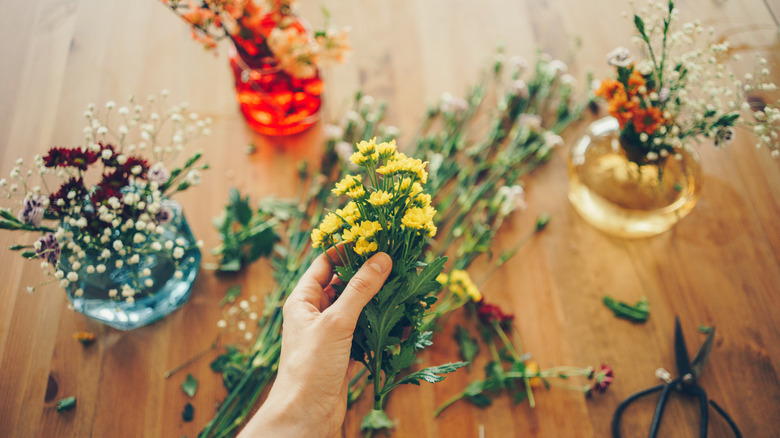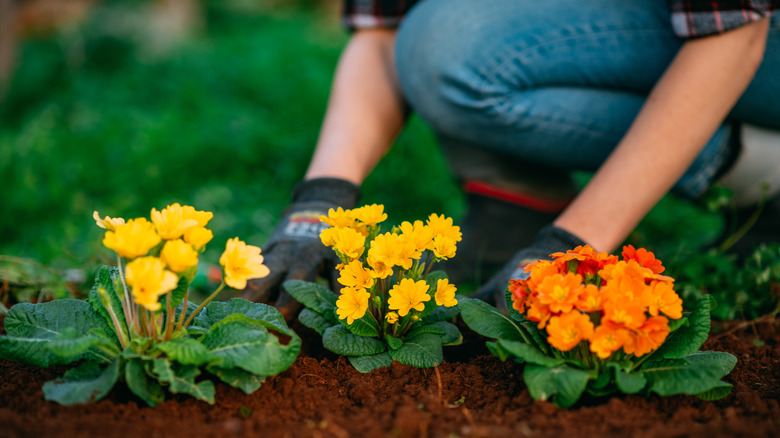How Martha Stewart Uses A 'Cutting Garden' To Keep Her Vases Full Of Flowers
If your decorating goals include adding more beautiful, fragrant fresh flowers to your home, you've likely noticed how costly it can be to pick up a bouquet here and there. Order from a florist, and that's a total budget buster. Planting your own bloom-filled garden can indeed be the answer to your fresh flower dilemma, but you also love the way those pops of color liven up your yard, right? Luckily, Martha Stewart is around to remind us that you can have your outdoor blooms and enjoy them indoors, too. How? Add a cutting garden specifically designed to produce flowers you can easily arrange in a vase.
"There's a way to keep your lush, flower-filled backyard garden intact but still have gorgeous blooms to make arrangements with: Plant an additional garden (called a cutting garden) and fill it with flowers that are meant to be displayed in a vase. You get the best of both worlds!" Stewart shared on Instagram.
The best flowers for cutting gardens
When planning a cutting garden, some horticulturists like to focus on flowers with long stems. If you have a variety of flower vases in different shapes and sizes, however, you can easily cut your blooms to fill them. For instance, hydrangeas look lovely bunched closely in more bulbous ones as well as in long-stemmed arrangements. Flowers like tulips and daffodils also make great long-stemmed options for fall planting to yield springtime blooms. Other perennials (plants that bloom every year) to consider for flowers from spring to summer are peonies, yarrow, phlox, and coneflower, as suggested by UVM Extension.
Many annuals (plants that need to be replaced from year to year) will bloom for longer periods. These include cosmos, sunflowers, and zinnias. You can also explore which colors of cut flowers are best for your home when you're selecting plants. Regardless of the color, you'll want to consider adding some greenery and filler plants as well if you're going to make more complex arrangements. Popular fillers you can grow include the ever-popular baby's breath and foliage such as coleus, which comes in a variety of colors. Hosta is another good choice for adding greenery to your vases. Be sure to check growing charts for your area to make sure all the plants you're considering will thrive before prepping your cutting garden beds.
Tips for the planting a successful cutting garden
Properly locating a cutting garden begins with choosing a spot that will get ample sun each day to encourage blooms (unless you choose flowers that can thrive in partially shady areas). Before you plant your flowers, turn the soil if necessary, adding fertilizer, compost, or fresh garden soil with slow-release plant food in the mix as needed. Just as with your standard flower beds, a cutting garden needs room for the plants to grow, so place them with plenty of space in between.
Other things to consider are placing larger plants behind smaller ones and adding any supports that might be needed to steady heavier plants as they bloom. Also, make sure that the flowers are easily accessible for cutting as they open up for you without having to trample anything. As you're visiting your cutting garden to fill your vases, keep them weeded and watered, and deadhead any withered blooms. This encourages additional buds to take their place, so you'll have flowers to enjoy indoors throughout the growing season.

